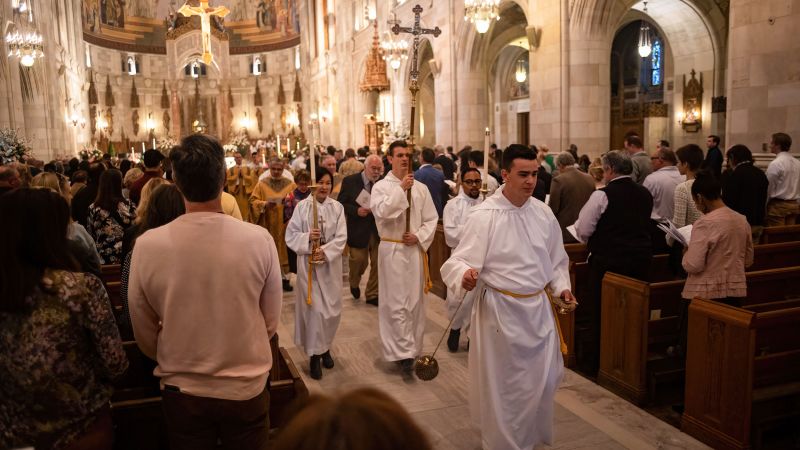From Pagan Festival to Holy Day: Easter's Transformation
Easter, a vibrant celebration marked by colorful eggs, chocolate bunnies, and family gatherings, holds a fascinating history interwoven with both pagan traditions and Christian beliefs. Its evolution from ancient springtime festivals to a major Christian holiday is a compelling narrative reflecting the complex interplay of cultural shifts and religious syncretism. This exploration delves into the fascinating journey of Easter, uncovering its multifaceted origins and explaining its transformation into the globally celebrated holiday we know today.
The Roots in Springtime Celebrations: Pre-Christian Influences
Long before the arrival of Christianity, many cultures celebrated the arrival of spring with festivals honoring fertility and rebirth. These celebrations, often tied to agricultural cycles, frequently involved symbols and rituals that resonate with Easter traditions even today.
Eostre/Ostara: The Goddess of Spring
One of the most prominent pre-Christian influences is the Anglo-Saxon goddess Eostre (or Ostara). While evidence surrounding her is limited, scholars suggest she was a goddess associated with spring, dawn, and fertility. Her name is believed to be the etymological root of the word "Easter," linking the holiday directly to ancient pagan beliefs. The egg, a potent symbol of new life and renewal, was likely a central element in Eostre's celebrations.
Other Pagan Spring Festivals
Numerous other cultures observed similar spring festivals. The Romans celebrated Hilaria, a festival of joy and mirth, while various other societies held rites and ceremonies linked to the rebirth of nature and the promise of abundant harvests. These festivals often involved feasting, games, and symbolic representations of fertility and renewal – elements that would later be incorporated into Easter celebrations.
The Christianization of Easter: A Gradual Process
The integration of pagan traditions into Christianity was a gradual process, often facilitated by the Church's strategy of adapting existing customs rather than outright suppressing them. This approach proved effective in converting pagan populations and ensured a smoother transition to the new faith.
The Adoption of Spring Equinox Celebrations
The early Church strategically chose to celebrate Easter around the time of the spring equinox, aligning with existing pagan springtime festivals. This clever strategy minimized disruption and allowed for a more seamless assimilation of the new faith into existing cultural practices.
The Significance of the Resurrection
The central narrative of Easter, the resurrection of Jesus Christ, provided a powerful theological framework within which to reinterpret existing spring symbols. The egg, previously a symbol of pagan fertility, became a metaphor for the resurrection – the breaking of the shell representing the emergence of new life, mirroring the triumph over death.
The Evolution of Easter Traditions
Over time, many pagan customs were subtly adapted and incorporated into Christian Easter celebrations. The exchange of eggs, initially a pagan fertility symbol, became a cherished Easter tradition. Similarly, the concept of a springtime celebration of renewal found a powerful parallel in the resurrection narrative.
Easter Today: A Global Celebration
Today, Easter is celebrated globally by billions of people, regardless of their religious affiliation. Its transformation from a collection of pagan springtime festivals to a major Christian holiday reflects the power of religious syncretism and the enduring appeal of springtime celebrations.
The Modern Easter: A Blend of Traditions
Modern Easter celebrations are a fascinating blend of ancient customs and Christian traditions. The Easter egg hunt, the consumption of hot cross buns, the Easter bunny, and church services all contribute to the rich tapestry of this multifaceted holiday.
Easter's Enduring Appeal
The enduring appeal of Easter lies in its celebration of rebirth, renewal, and hope – themes that resonate deeply across cultures and throughout history. Whether rooted in pagan spring festivals or Christian beliefs, Easter continues to be a time for family gatherings, festive celebrations, and a renewed sense of hope and optimism.
Conclusion: A Legacy of Transformation
The journey of Easter from pagan festivals to a major Christian holiday illustrates the remarkable ability of religious traditions to adapt, evolve, and integrate with existing cultural practices. The enduring appeal of Easter lies in its ability to encompass a diverse range of traditions and beliefs, creating a truly global celebration of rebirth and renewal. Its story is a testament to the fluidity of cultural exchange and the power of shared symbolic meaning.
